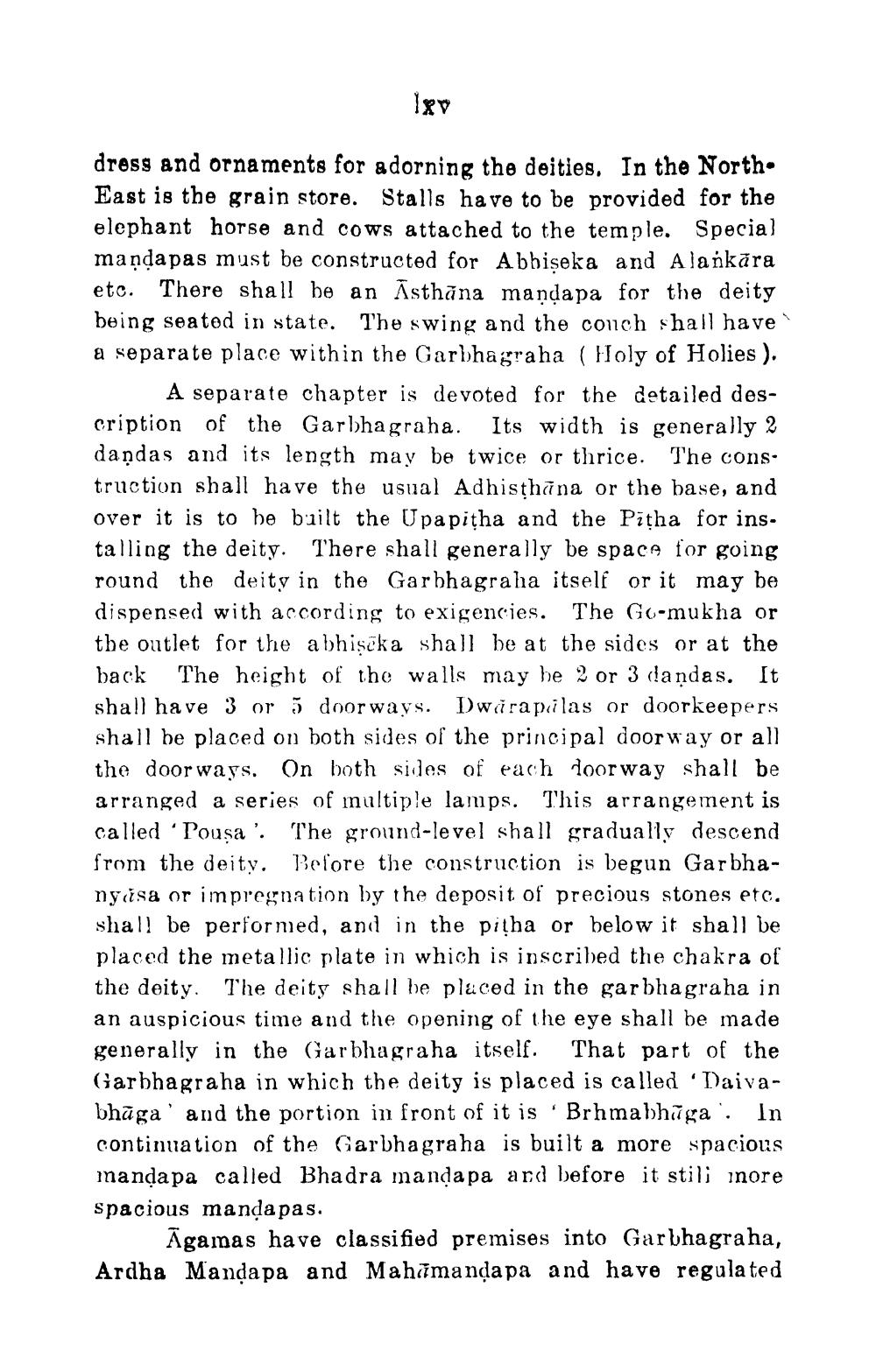________________
18V
dross and ornaments for adorning the deities. In the North. East is the grain store. Stalls have to be provided for the elephant horse and cows attached to the temple. Special mandapas must be constructed for Abhişeka and Alańkāra etc. There shall be an Āsthāna mandapa for the deity being seated in state. The swing and the couch shall have a separate place within the Garbhagraha (Holy of Holies ).
A separate chapter is devoted for the detailed description of the Garbhagraha. Its width is generally 2 dandas and its length may be twice or thrice. The cons: truction shall have the usual Adhisthana or the base, and over it is to be built the Upa pitha and the Pitha for ins. talling the deity. There shall generally be space for going round the deity in the Garbhagraha itself or it may be dispensed with according to exigencies. The Go-mukha or the outlet for the a bhişčka shall be at the sides or at the back The height of the walls may be 2 or 3 andas. It shall have 3 or 5 doorways. Dwirapuilas or doorkeepers shall be placed on both sides of the principal doorway or all the door ways. On both sides of each door way shall be arranged a series of multiple lamps. This arrangement is called 'Pouşa'. The ground-level shall gradually descend from the deity. Before the construction is begun Garbhanyrisa or impregnation by the deposit of precious stones etc. shall be performed, and in the pitha or below it shall be placed the metallic plate in which is inscribed the chakra of
e deity. The deity shall be placed in the garbha graha in an auspicious time and the opening of the eye shall be made generally in the Garbhagraha itself. That part of the Garbhagraha in which the deity is placed is called 'Daivabhāga' and the portion in front of it is Brhmabhūca. In continuation of the Garbhagraha is built a more spacious mandapa called Bhadra manda pa ard before it stili inore spacious mandapas.
Āgamas have classified premises into Garbhagraha, Ardha Mandapa and Mahamandapa and have regulated




